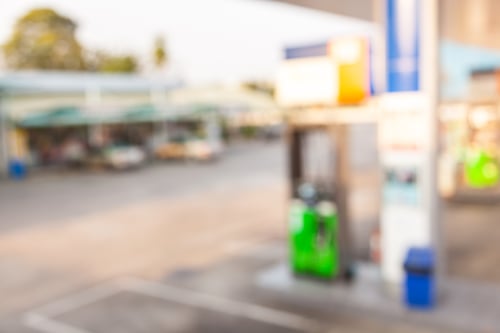Five Ways Technology Helps Gas Station Stay Competitive

With roughly 120,000 gas stations operating across the U.S. (according to the National Association of Convenience Stores), it’s no wonder that success in this industry comes down to three things: Pricing, Visibility, and Efficiency. Gas station owners are constantly looking for ways to gain a competitive advantage in each of these areas, and technology is helping them do just that. Here are five kinds of tech that help fueling stations pump up profits year over year.
1. Digital Pricing Makes Cents
It’s endlessly amusing that consumers make their choice about gas stations based on a tiny price difference. They might save less than a dollar at the pump in total, but drivers begrudge every cent they pay to fill the tank. With the constant fluctuation in the bulk price for gas and the competition always looking for an edge, it’s not unusual for a station to make price changes multiple times a day to stay ahead. Of course, it’s easier to do this electronically with an SMD-LED sign rather than bringing out the long pole to change out digits by hand. Consumers are also smart enough to know that digital signs are more likely to be up-to-the-minute in offering them the best deal.
2. Going Mobile Matters
What about capturing customers while they are still miles away? Gas price tracking apps like GasBuddy steer drivers in the direction of the lowest price long before they see a gas station sign from the road. In 2016, one out of ten motorists reported using a gas price tracking app (as revealed by a Market Force Information survey). But the price at the pump isn’t always what is listed online—and that’s a problem. Every gas station proprietor should have a gas app on their smartphone. They can monitor the website throughout the day to ensure their prices are being accurately listed and local competitors aren’t taking advantage of the system. Store owners can immediately report corrections to ensure they don’t miss out on revenue due to outdated pricing.
3. Convenience Is Key
The NACS reports that convenience stores account for 80% of gas sales in the U.S. But even though fuel sales represent two thirds of the typical revenue for a store, they only account for one third of the profit. In fact, the pumps are there just to get people in the door. The real money comes from in-store sales of beverages, snacks, and additional items to keep travelers fueled on their trip. Driving foot traffic inside the store to capture that revenue is absolutely essential. One of the most effective ways to achieve this goal is with external signage highlighting special offers. Using electronic boards that can be automatically updated to promote coffee in the morning, snacks in the afternoon, and beer on payday ensures that drivers see a deal that’s too good to resist at just the right time.
4. All in the Numbers
Bookkeeping and POS software are the backbone of any well-run gas station and convenience store. The high volume of transactions makes it impossible to keep up with just an Excel spreadsheet. Integration of accounting and sales software saves time and reduces errors since data doesn’t have to be rekeyed or manually imported across systems. SaaS offerings that are cloud based and maintained by the software vendor often make the most sense for owners with multiple locations and those who want to manage their business remotely rather than spending their time doing the books on-site. Users can choose any number of additional capabilities to help manage everything from loyalty programs to lottery reconciliation.
5. Smarter Stock Options
A typical gas station has a small footprint and very little room for stocking extra items in its store. Keeping the right level of inventory on hand and more on the way with “just in time” delivery helps station owners run a lean operation. Inventory management software featuring business intelligence (BI) dashboards can offer analytics and insight to promote smart decision-making based on historical trends. Having processes in place that reliably maximize profit can also increase the valuation of a gas station if the owner decides to sell—or make it easier to expand when there’s an opportunity to acquire new locations. That’s the hidden benefit of using technology now to prepare for the future of your business!






